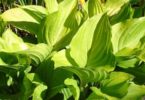Microbiology Important Questions and Answers:
Food can be kept unspoiled at
(a) High temperature
(b) Low temperature
(c) Osmotic temperature
(d) All the above
Hydrophobia is caused by a
(a) Bacterium
(b) Fungus
(c) Virus
(d) Protozoan
Who is the father of microbiology?
(a) Antony Von Leeuwenhock
(b) Alexander Flemming
(c) Anoton De Berry
(d) Robert Koch
The first to isolate plant virus was
(a) W.M Stanley
(b) Stackmann
(c) Smith
(d) Ivanowski
Related: Permutation questions and answers
RNA containing viruses belong to
(a) Ribocubica
(b) Ribobinala
(c) Ribovira
(d) Deoxyvira
A substance (low molecular weight protein) produced by host cells in response to viral infection and protect other cells against further viral infection is
(a) Phytotoxin
(b) Interferon
(c) Antibody
(d) Hormone
Which is not help in N2 fixation
(a) Anabaena
(b) Nostoc
(c) Oscillatoria
(d) Rhizobium
AIDS is due to
(a) Deficiency of T4 lymphocytes
(b) High blood pressure
(c) Deficiency of riboflavin
(d) Bacterial infection
Related: Logarithm questions and solutions
Sterilisation by autoclaving is carried out to
(a) Kill bacteria and other pathogens
(b) Kill viruses
(c) Kill bacteria and enzymes
(d) Inactivate enzymes
The transference of a gene or of several genes from doner bacterial cell by bacteriophage acting as an intermediate agent is known as
(a) Transition
(b) Translation
(c) Transduction
(d) Transformation
Circular DNA molecule occurs in
(a) Viruses
(b) Bacteria, chloroplasts and mitochondria
(c) Bacteria and chloroplasts only
(d) Bacteria only
The smallest known agents of infectious diseases are
(a) Viroids
(b) Bacteria
(c) Viruses
(d) Fungi
Related: MCQ on Electrochemistry
Some viruses have only RNA but no DNA this would indicate that
(a) Their nucleic acid must combine with host DNA for virus duplication
(b) These viruses can not replicate
(c) RNA too can transmit hereditary information
(d) The viruses have non heritable information
Sometimes, when a virus attacks a bacterium, neither the virus multiplies nor the bacterium dies. This phenomenon is called as
(a) Adsorption
(b) Assimilation
(c) Viral stability
(d) Lysogeny
Which of these cannot be grown in an artificial nutrient medium?
(a) Bacteria
(b) TMV
(c) Fungus
The genetic material in viruses is
(a) Only RNA
(b) Only DNA
(c) RNA and DNA both
(d) RNA or DNA i.e. one nucleic acid in a virus
Related: Photometry MCQs
Antibodies are
(a) Globular proteins
(b) Immuno globulins
(c) Carbohydrates
Viruses multiply in
(a) Bacteria only
(b) All living cells
(c) Specific living cells
(d) Rotten food
Most of the bacteria can tolerate high temperatures due to
(a) Type of cell wall
(b) Cell organization
(c) Homopolar bonds in their proteins
(d) Absence of phospholipids in their walls
Genes are packed in bacterial chromosome by
(a) Acid proteins
(b) Histones
(c) Basic proteins
(d) Actin
Related: Human health and disease MCQ
The smallest free living organisms which cause disease among plants are
(a) Viruses
(b) Mycoplasma
(c) Fungi
(d) Bacteria
Which one of the following is also algae
(a) Cyanobacteria
(b) Rhodospirillum
(c) Green bacteria
(d) Purple bacteria
Which is not a cyanobacterium?
(a) Lyngbya
(b) Plectonema
(c) Anabaena
(d) Sinorhizobium
Antibiotics cure diseases by
(a) Removing pain
(b) Competitive inhibition
(c) Turning the pathogen out of the body
(d) Fighting with the disease causing organism
Related: Genetics MCQ
Helical contractile sheath occurs in
(a) Bacteriophage
(b) Bacteria
(c) Riboviruses
(d) Fungi
Elementary cell body in mycoplasma perform the function of
(a) Metabolism
(b) Excretion
(c) Reproduction
(d) Respiration
Water bloom is commonly caused by
(a) Bacteria
(b) Green algae
(c) Blue-green algae
(d) Hydrilla
Which of the following is not caused by a bacterium
(a) Typhoid
(b) Tetanus
(c) Kwashiorker
(d) Diphtheria
Related: Kidney quiz questions and answers
Which one of the following organisms may respiration in the absence of oxygen?
(a) Azotobacter
(b) Clostridium
(c) Rhizobium
(d) Lactobacillus
The water of Ganga river is pure due to the presence of
(a) Cyanophages
(b) Hydrophytes
(c) Bacteria
(d) Bacteriophages
The microflora occuring in largest number in soil are
(a) Grasses
(b) Fungi
(c) Bacteria
(d) Algae
Nitrogen fixation organism is
(a) Nitrosomonas
(b) E.coli
(c) Nitrobactor
(d) Rhizobium and Azotobacter
Related: Polymer questions and answers
Eukaryote does not have
(a) Nuclear membrane
(b) Cytoskeleton
(c) Histone
(d) Mesosome
‘Citrus canker’ is caused by a
(a) Fungus
(b) Bacterium
(c) Virus
(d) Nematoda
Pulse polio immunization is being carried out with the aim
(a) To treat polio
(b) To prevent deformities due to polio
(c) To contain polio
(d) To eradicate polio
First organisms to evolve on the earth were
(a) Saprotrophs
(b) Chemohetrotrophs
(c) Photoautotrophs
(d) Chemoautotrophs
Related: Kingdom Animalia quiz
Bioluminiscence is caused by oxidation of
(a) Cytochroms
(b) Luciferin
(c) Phytochromes
(d) Chlorophyll
Edward Jenner discovered
(a) Vaccination against chicken pox
(b) Vaccination against small pox
(c) Immunization against chicken pox
(d) Immunization against small pox
A naked RNA particle causing the symptoms like that of a virus disease is known as
(a) Viroid
(b) Virion
(c) Viral
(d) None of these
Streptomyces venezuelae yields
(a) Aureomycin
(b) Chloromycetin
(c) Tetracycline
(d) Streptomycin
Related: Kingdom Plantae questions answers
Which of the following fixes CO2 in carbohydrates?
(a) Bacillus
(b) Rhizobium
(c) Nitrobacter
(d) Rhodospirillum
Azotobacter and Bacillus polymyxa are the examples of
(a) Symbiotic nitrogen fixers
(b) Non-symbiotic nitrogen fixers
(c) Disease causing bacteria
(d) Ammonifying bacteria
The microbial conversion of ammonia to nitrate is called as
(a) Ammonification
(b) Nitrification
(c) Denitrification
(d) Nitrogen fixation (N2-fixation)
Related: General Science Quiz test
Fruit, meat and milk are preserved at room temperature through the process of
(a) Pasteurization
(b) Fridge
(c) Dehydration
(d) Vernalisation






